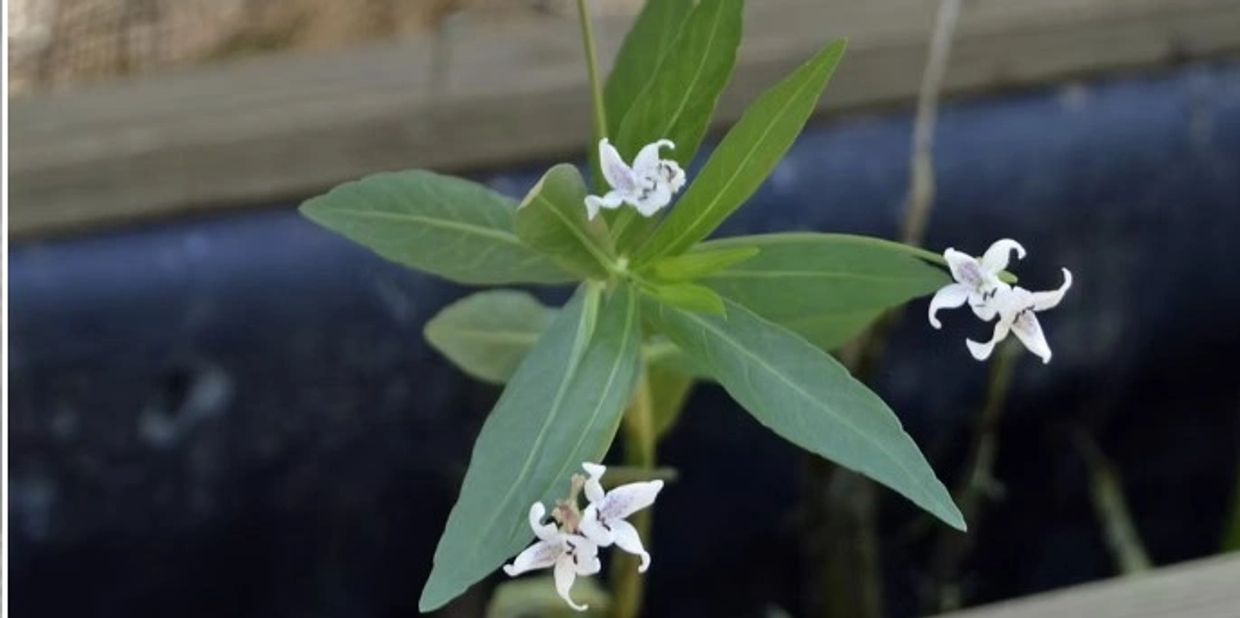
Water willow
American Water-Willow
Water-willow, Justicia americana, is a common perennial along stream and lake margins. It grows to 3 feet tall and often forms dense colonies that help stabilize shorelines. The stems do not usually branch and have prominent whitish lines. Leaves are opposite, long and narrowly tapered (up to inches 6 long and ½ inch wide) with smooth margins and a distinctive whitish mid-vein, looking much like those of the willow tree.
Flowers bloom from May through October on long stems originating from the base of the leaves. The blooms are 5-petaled, orchid-like (3/4 inch diameter), white with purple/violet streaks on the lower petals. Water-willow can spread from seeds and forms extensive rhizomes by which it forms colonies and spreads rapidly.
Submerged portions of all aquatic plants provide habitats for many micro and macro invertebrates. These invertebrates in turn are used as food by fish and other wildlife species (e.g. amphibians, reptiles, ducks, etc.). After aquatic plants die, their decomposition by bacteria and fungi provides food (called “detritus”) for many aquatic invertebrates. Deer will browse the leaves while beaver, muskrat, and nutria will consume the rhizomes of water-willow.
What Does Aquatic Habitat Mean to Lake Livingston?
Successful native aquatic plant colonies will:
- Create habitat for fingerlings and create a lake that attracts fishermen
- Add habitat for birds, reptiles, and other invertebrates
- Reduce shore erosion and re-siltation, extending the life of the lake and improving water quality
- Teach the students involved the importance of creating a self-sustaining ecology
- Become self-sustaining once established, extending the habitat into the future
- Make Lake Livingston cleaner, clearer, and more productive for recreational enthusiasts and fishermen and women
- Reestablish Lake Livingston, over time, as a top fishing location for weekend fishermen and for tournaments, improving the surrounding economy
This website uses cookies.
We use cookies to analyze website traffic and optimize your website experience. By accepting our use of cookies, your data will be aggregated with all other user data.